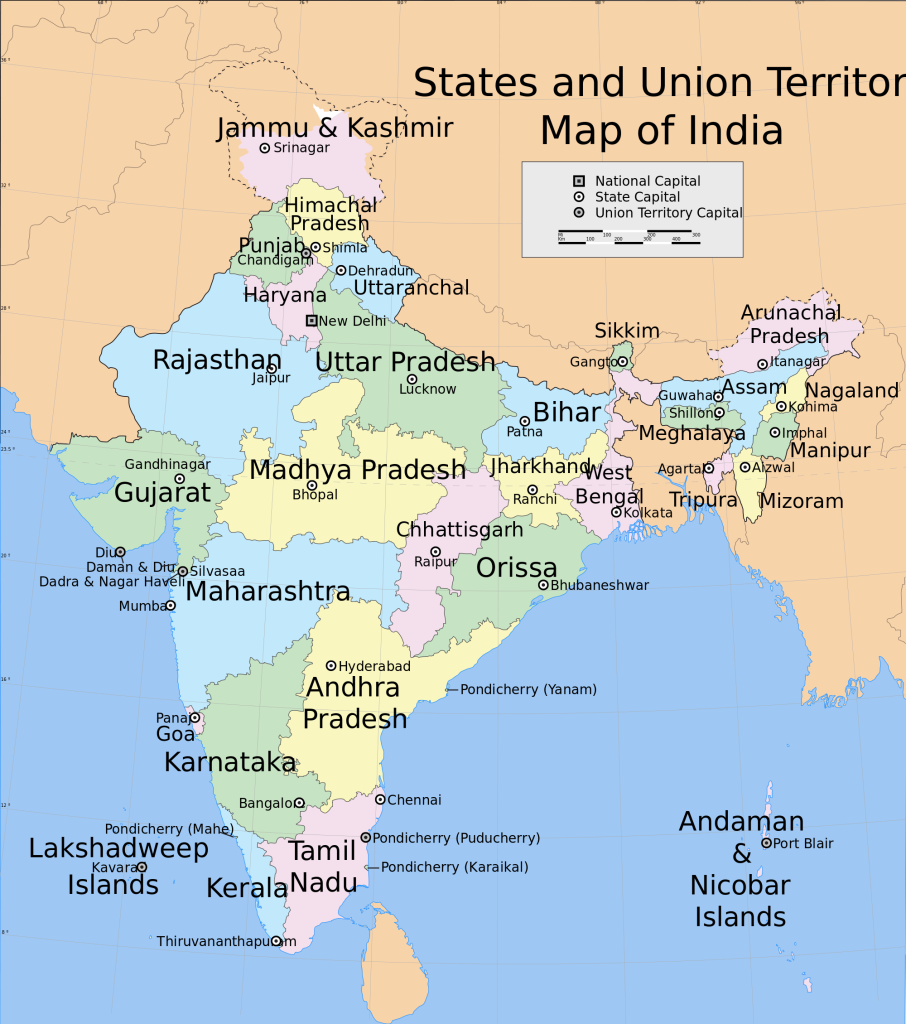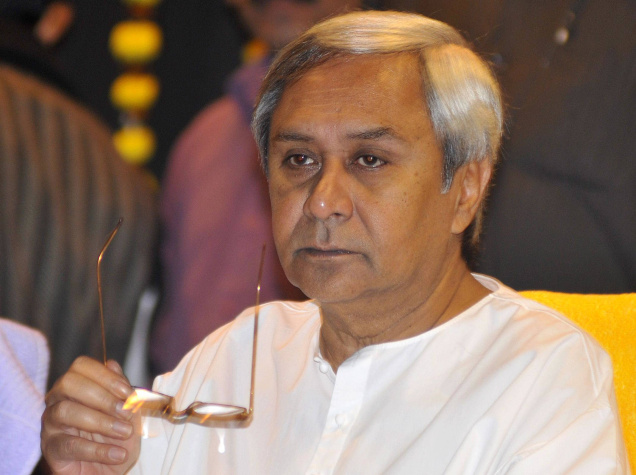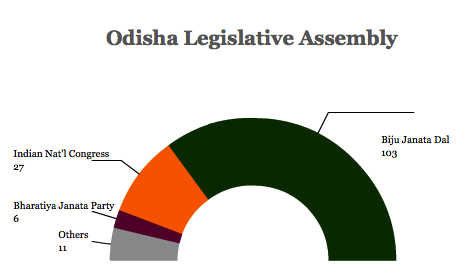It’s election day once again in India, and today marks the fifth phase of the nine-phase marathon to determine India’s national government. Indians today will elect 121 members of the Lok Sabha (लोक सभा). That makes today’s round, just barely, the most important of all nine phases. Together with the April 24 phase next week, Indians will choose 43% of the seats in the entire Lok Sabha in just two rounds of voting. ![]()
So what are the keys to the voting in today’s phase?
Here’s our trusty map of India’s states, as a reference point before we jump into the state-by-state breakdown:
Karnataka
The biggest prize is the south-central state of Karnataka, a state of over 61 million Indians, home to Bangalore and India’s high-tech sector. All of its 28 representatives to the Lok Sabha will be elected in today’s voting.
More than any other state in India, it’s been especially impermeable to the ‘Modi wave’ that polls predict will lift the opposition Hindu nationalist Bharatiya Janata Party (the BJP, भारतीय जनता पार्टी) and its prime ministerial candidate, Gujarat chief minister Narendra Modi, to power.
In the May 2013 state elections, the BJP lost control of the Karnataka state government, terminating the BJP’s historic first government in India’s south. The loss had less to do with Modi than with corruption and infighting within the state party. Nonetheless, the BJP was wiped out, losing 72 seats in the state assembly, and damaging its reputation in advance of this year’s national elections.
With the memories of the disastrous BJP state government still fresh, Karnataka could be the rare bright spot for India’s governing party, the Indian National Congress (Congress, भारतीय राष्ट्रीय कांग्रेस), which could pick up eight seats for a total of 14, according to the latest NDTV poll.
One of the marquee contests is in the Bangalore South constituency, where Congress’s candidate is Infosys co-founder Nandan Nilekan, running against the BJP’s Ananth Kumar.
Rajasthan
The BJP’s most impressive victory in last November’s state elections occurred in the arid, western state of Rajasthan, India’s eight-most populous state, where Congress lost 75 seats and the BJP gained 84 in the state’s legislative assembly. It was the BJP’s best-ever performance and Congress’s worst-ever performance.
So Modi has high hopes here, in a state that lies just north of his own home state of Gujarat — if the BJP runs away with this election and forms India’s next government, it will be largely because of the lopsided victories it’s expected to win here and elsewhere in India’s north.
Twenty constituencies, out of a total of 25, will vote in Rajasthan today, including the historic city of Jodhpur (pictured above).



